A summer night tour of the Changyeonggung and Deoksugung
AMONG A wealth of Korean cultural heritages lie the most treasured and beloved five royal palaces of the Joseon dynasty—Gyeongbokgung, Changgyeonggung, Changdeokgung, Deoksugung, and Gyeonghuigung. The charms of grand palaces are different at night, as they show off their overwhelming beauty located in the center of the bustling city of Seoul. The Yonsei Annals captured the glorious night scenery in shots taken from every corner of the Changgyeonggung and Deoksugung palaces.
Changgyeonggung Palace
Built in 1483, Changgyeonggung Palace, located in Jongno-gu, Seoul, was a complementary residential space for the royal family. Unlike other palaces, it faces slightly toward the east, following the old tradition of spaces dedicated to the queen mother or royal concubines rather than to the king himself[1]. Upon entering the main gate, Honghwamun, there is a long pathway to Myeonjeongjeon Hall. Along the way, there is Okcheon Bridge that crosses over the artificial river that once flowed all the way to Cheonggyecheon Stream. Myeonjeongjeon Hall is smaller in size compared to Geunjeongjeon, the primary jeong-jeon[2] of Joseon located inside the main royal palace of Gyeongbokgung, but Myeongjeongjeon Hall is the oldest remaining jeong-jeon amongst all the royal palaces in Korea. Twenty-four pum-gye-seok stones are aligned in the front yard of Myeongjeongjeon Hall, each representing the hierarchy of subjects serving the king. Myeongjeongjeon Hall was destroyed during the 1592 Japanese Invasion of Korea but was renovated in 1616, restoring its historical value by adopting wooden architectural styles of the early Joseon dynasty[3].


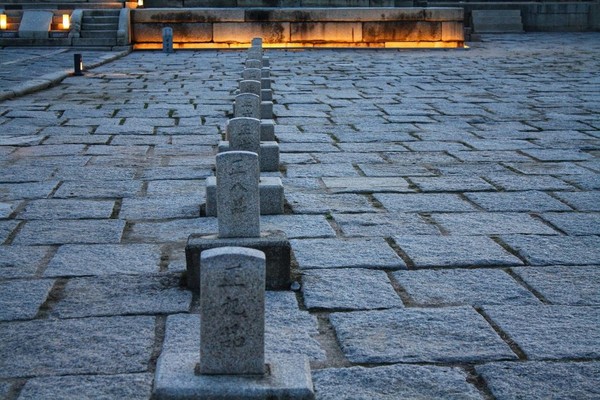
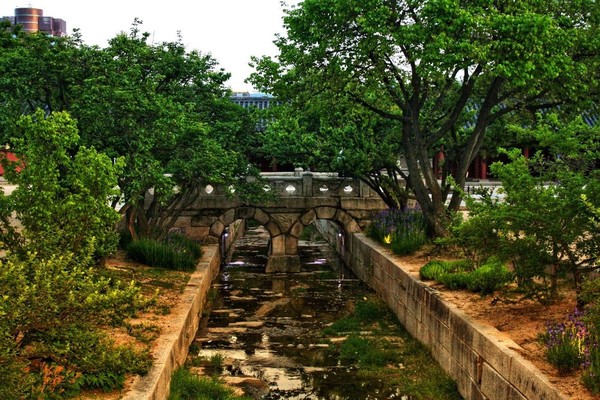
Moving toward the east of Myeongjeongjeon Hall, one can witness the Chundangji Pond, where kings held rituals and tended to the garden[3]. The Chundangji Pond is an ideal photo area to fully experience the changing nature scenery across the four seasons. The clear water reflects the lantern lights hanging above the walkway, creating dreamy red and blue glints across the water. The breezy and relaxing atmosphere at night spent at the Chundangji Pond seems to provide restful shelter from blazing hot summer days.

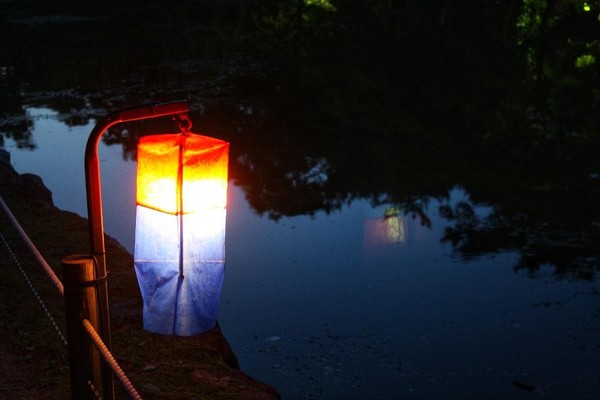
The trail from the pond connects to the Grand Greenhouse, the first greenhouse to adopt Western architectural styles[3]. The greenhouse was built in 1909 with steel frames and glass displays—a modern building structure that was introduced during the Korean Empire in the late 19th to early 20th century[4]. The indoor garden exhibits varied species of Korean native plants such as the Ulleung chrysanthemum[4]. Changgyeonggung remains one of the least-known palaces; yet at every corner of the palace, one can glimpse the royal culture of the Joseon dynasty.
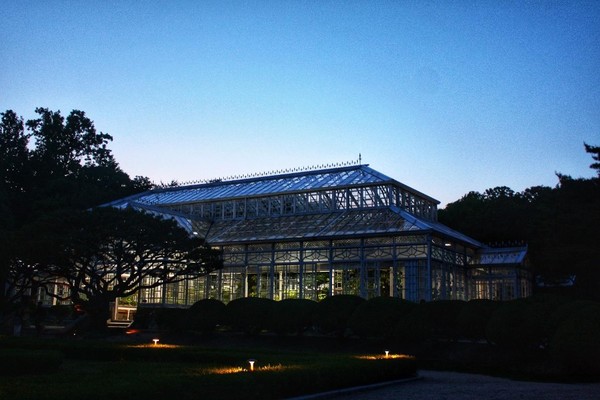

Deoksugung Palace
Located in Jung-gu, Seoul, Deoksugung which means a palace of virtuous longevity of the king, served as a residence for the royal family during the Joseon monarchy until the Japanese annexation of Korea. Its history dates back to 1592 when King Seon-jo arranged the entire region for his temporary residence during the Japanese Invasion[5]. The main entrance of Deoksugung Palace, Daehanmun, is the only one-story palace gate in Korea, and is also east-ward facing, like the Honghwamun Gate of Changgyeonggung Palace[5]. After passing through the Gwangmyeongmun Gate, Junghwajeon Hall stands tall upon a stone terrace. Four statues of hae-tae, mythical animal statues believed to be guardians, sit upon the steps of Junghwajeon Hall. As the main hall of Deoksugung was built for official state affairs, Junghwajeon Hall was where the throne of the king was located, placed behind a wooden canopy. Spotlights illuminate the floor, brightening the interior of the building, and accentuating the high dignity of the throne back then. The gambrel roof of the building with two slopes on each side and the ornate ceiling with paintings of the sun, moon, and five flower buds are typical royal motifs of the Joseon dynasty.
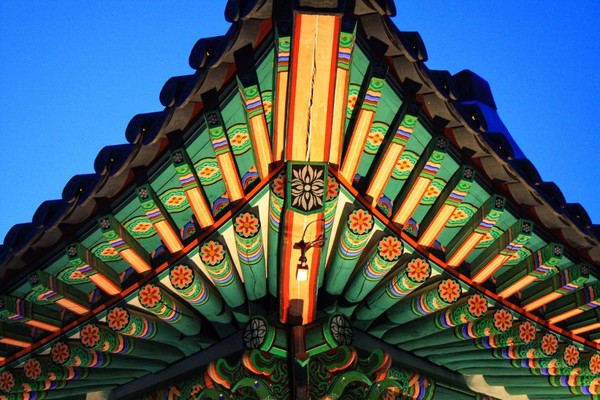
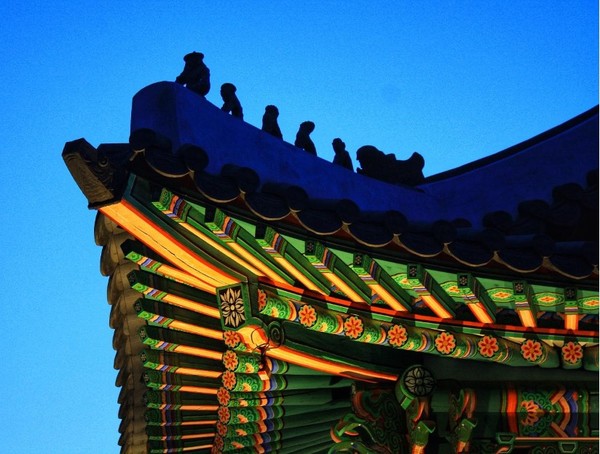
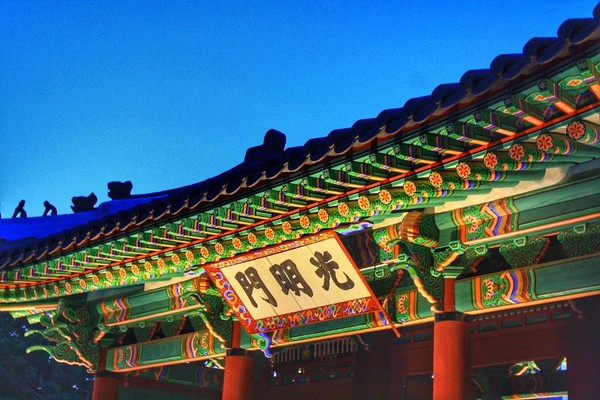
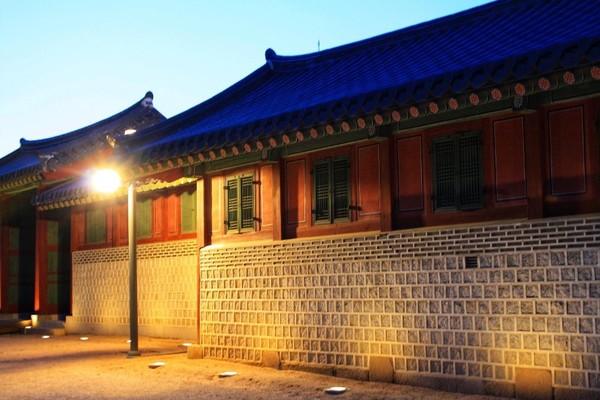
Deoksugung Palace has been renovated into a public park with museums exhibiting the royal arts and artifacts of the Korean Empire. Seokjojeon Hall, which is now open to the public as the Daehan Empire History Museum, was where Emperor Gojong greeted foreign guests[3]. Surrounding the palace is the Stonewall Walkway, a pedestrian footpath measuring 900m in length[6]. As an attempt to integrate traditional architectural features within urban space, Stonewall Walkway is a popular tourist spot with stunning scenery.
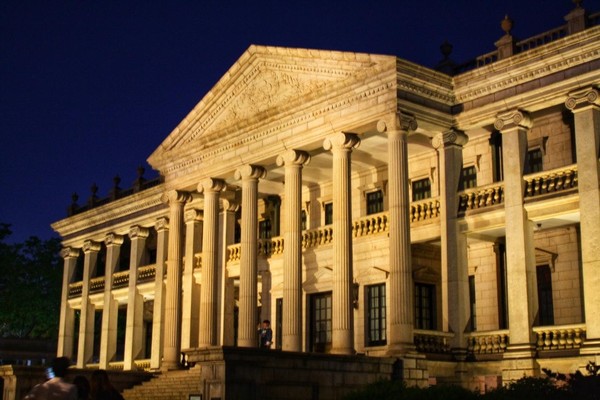

* * *
Both palaces have gone through multiple renovations since the Joseon dynasty due to wartime destruction. Nevertheless, the twinkling Joseon palaces amongst the surrounding urban night scenery reveal their true beauty and the history that they represent.
[1] Seong-jong Sil-lok
[2] Jeong-jeon: the administrative headquarter for greeting foreign officials and delivering messages of condolence and celebration to the king
[3] Cultural Heritage Administration
[4] Visit Seoul
[5] Deoksugung Palace
[6] Visit Korea

